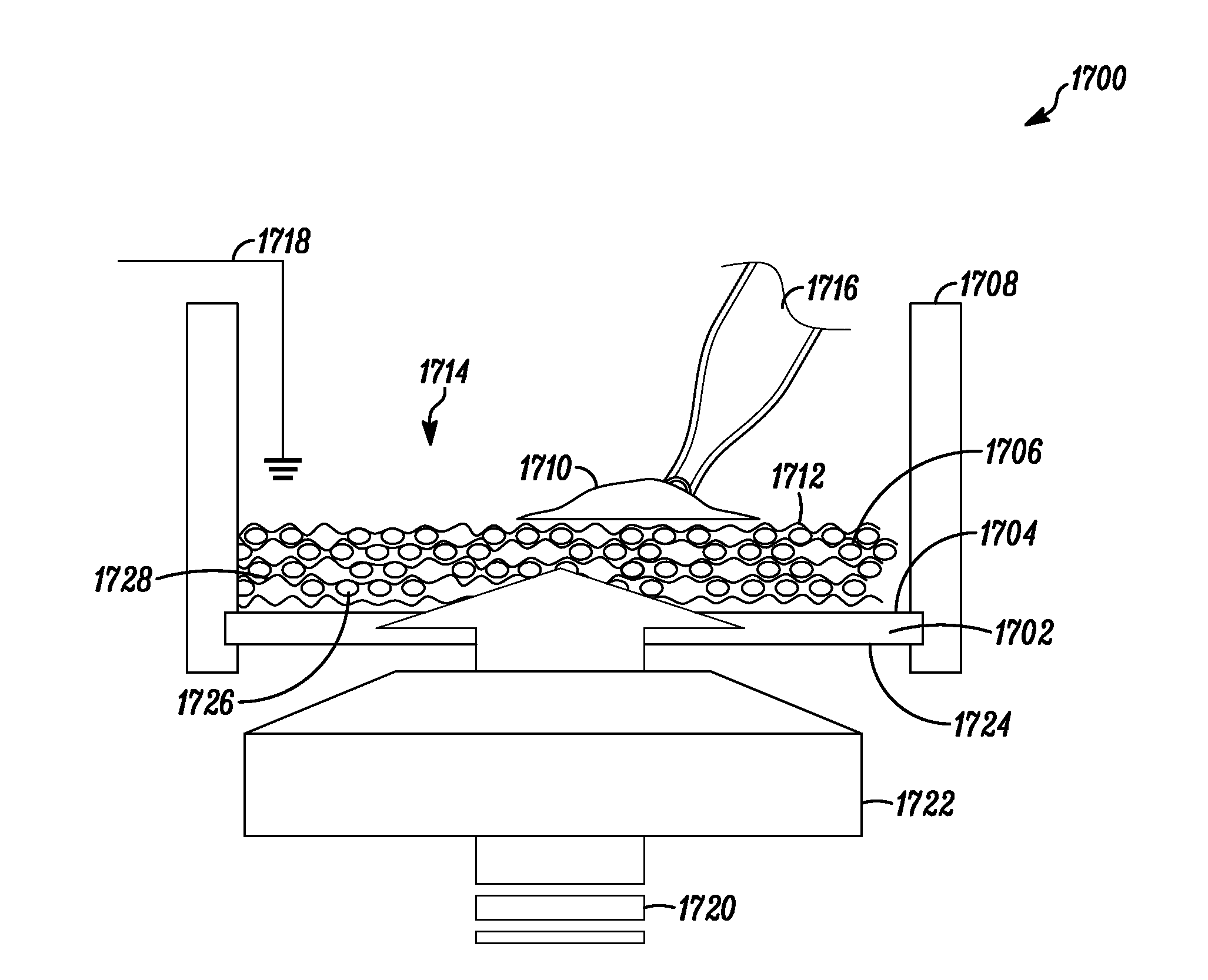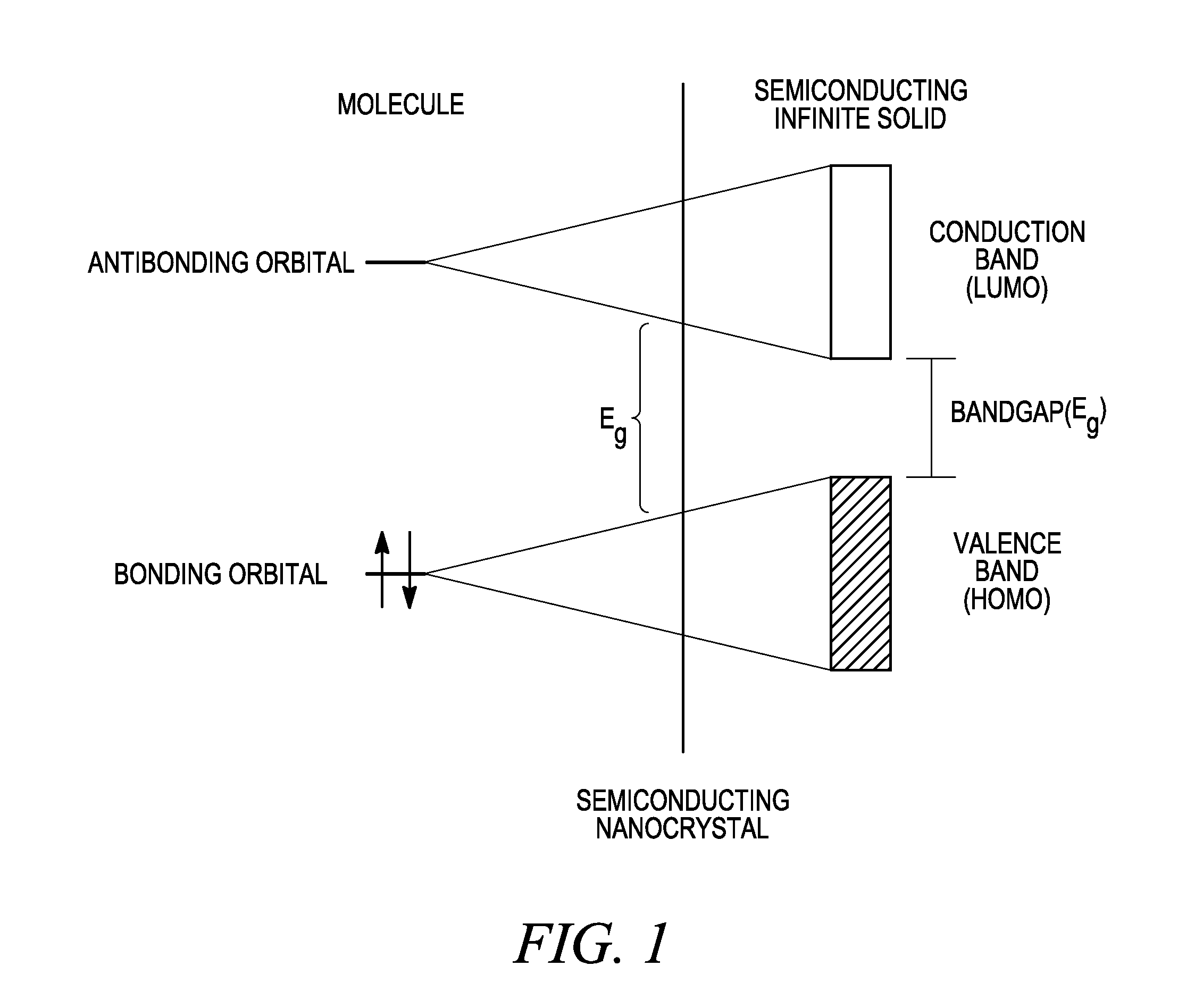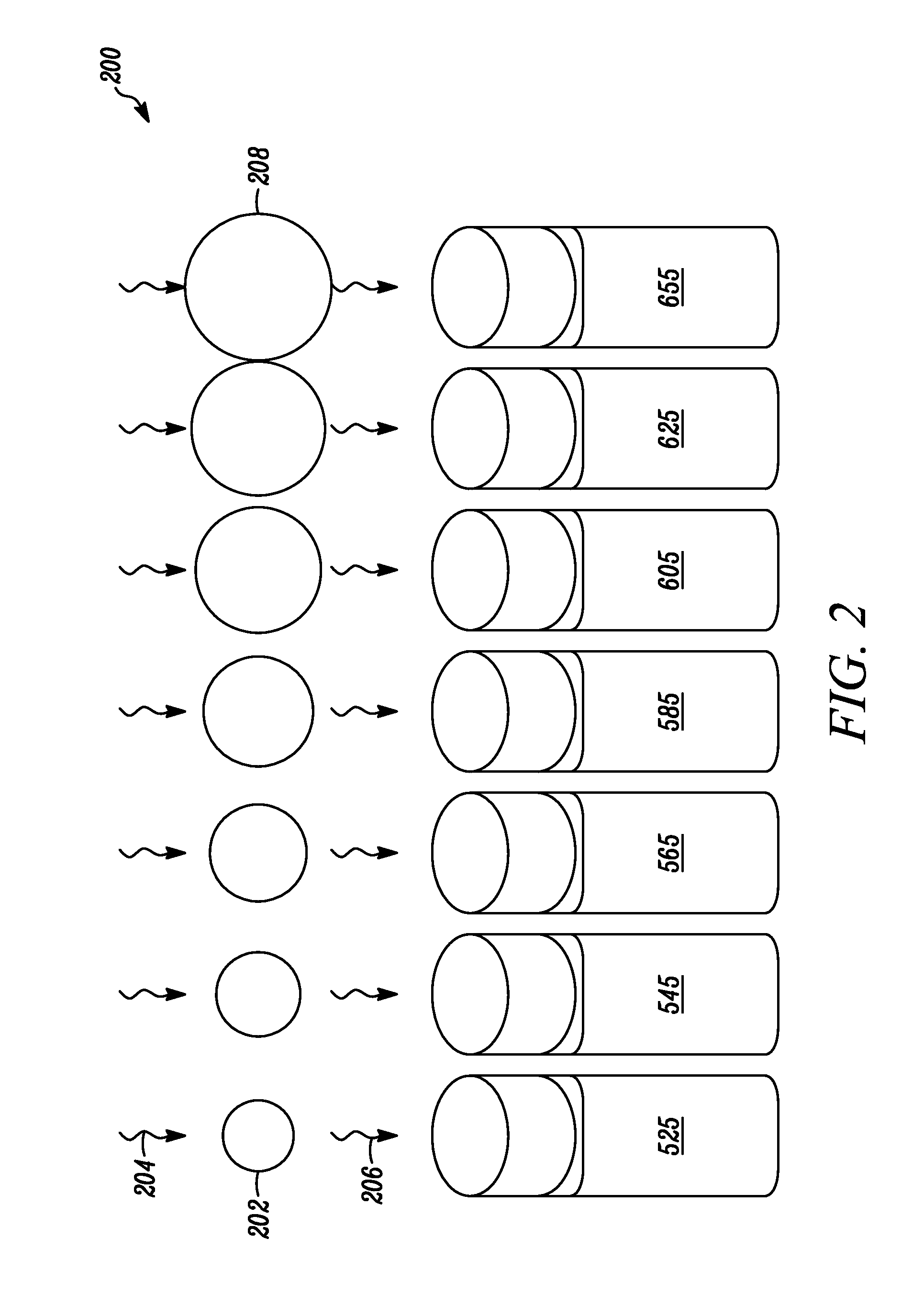Activation and monitoring of cellular transmembrane potentials
a transmembrane potential and activation technology, applied in the field of monitoring and manipulating cellular transmembrane potentials, can solve the problems of affecting the well-being of living organisms, affecting the quantum yield of materials, etc., and achieves high quantum yield, large stokes shift, and different optical properties.
- Summary
- Abstract
- Description
- Claims
- Application Information
AI Technical Summary
Benefits of technology
Problems solved by technology
Method used
Image
Examples
example 1
Membrane Labeling with Quantum Dots
[0126]Quantum dots are ideal candidates for use as voltage-sensitive probes, as their physical size is comparable with the thickness of the cell membrane, and their electronic properties make them potentially tunable to the external electromagnetic field. Referring to FIG. 6A, the absorption of a photon 602 having a first wavelength and with energy higher than the band gap 604 between the HOMO valence band 606 and the LUMO conduction band 608 of a quantum dot forms electron-hole pairs than can radiatively recombine to emit a photon 610 having a second wavelength. An intense local electric field (e.g., due to a change in the membrane potential across the lipid bilayer of a cell) can interact with the free charge carriers generated by excited quantum dots. FIG. 6B illustrates schematically how an electrical field 612 can modulate the optical properties of the emitted light 614. For example, a membrane potential of 100 mV across the hydrophobic lipid ...
example 2
Screening Assays of Quantum Dots
[0128]QDOT nanocrystal-based optical voltage sensors are provided to monitor rapid changes in cell membrane potential. When localized inside the cellular membrane, the nanoparticles are sensitive to and detect changes in transmembrane voltage gradient and report it as the change in their emission properties. A series of quantum-dots were prepared and screened to monitor their optical properties in response to chemical and electrical stimulation of cells.
[0129]A. Effect of Chemical Stimulation
[0130]The effect of chemical stimulation on cells treated with quantum dots was monitored according to the following protocol. Cells were incubated with nanocrystal-based voltage sensors in 96-well plates for 1 hour, and then any excess nanoparticles were washed away. A population of labeled cells was depolarized using a chemical stimulus (100 mM KCl), appropriate for high-content imaging experiments. FIG. 10 shows the emission intensity (expressed as relative flu...
example 3
Quantum Dot-Based Activation Platforms
[0134]A light-controlled activation platform is described for remote reversible manipulation of the membrane potential. The described materials and methods provide an alternative to passive monitoring of the cell functional activity, and provide the ability to non-invasively manipulate the membrane potential of cells, which is vital for understanding their development, communications and fate. Traditional non-physiological methods rely most commonly on pharmacological intervention via addition of “high K+” solution or pharmacological channel openers or direct stimulation of cells with microelectrodes. These non-physiological methods, however, can have serious shortcomings, including the lack of control of the membrane potential, irreversibility of elicited changes, and low temporal resolution.
[0135]The alternative approach provided herein uses light to trigger remote reversible manipulation of the membrane potential in a temporally precise and s...
PUM
 Login to View More
Login to View More Abstract
Description
Claims
Application Information
 Login to View More
Login to View More - R&D
- Intellectual Property
- Life Sciences
- Materials
- Tech Scout
- Unparalleled Data Quality
- Higher Quality Content
- 60% Fewer Hallucinations
Browse by: Latest US Patents, China's latest patents, Technical Efficacy Thesaurus, Application Domain, Technology Topic, Popular Technical Reports.
© 2025 PatSnap. All rights reserved.Legal|Privacy policy|Modern Slavery Act Transparency Statement|Sitemap|About US| Contact US: help@patsnap.com



